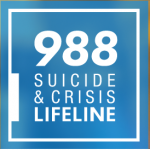In the United States, it is estimated that about half of people with bipolar disorder will attempt suicide, and as many as one in five will die from an attempt. Now, recent findings from a brain scan study published in the American Journal of Psychiatry may help explain why some kids living with the mood disorder are at higher risk for self-harm than others, Yale News reports.
Bipolar disorder—formerly known as manic-depressive disorder—is a chronic mental illness that causes dramatic shifts in a person’s mood, energy and ability to think clearly. Among teens, the mental illness is thought to be a main driver of suicide, currently the leading cause of death in adolescents and young adults.
For this latest study, researchers at the Yale Child Study Center studied MRI scans of the brains of several adolescents and young adults living with bipolar disorder. The scans focused on problems in the teens’ frontal-limbic systems, where emotions and impulses arise, which previous adult studies linked to an increased risk of suicide.
After comparing the scans of kids who had attempted suicide and those who had not, scientists found several telltale differences in the volume and activity in their frontal cortexes, which helps regulate emotions and impulses. Researchers also found differences in white matter, which connects those areas of the brain.
“The findings suggest that [if] the frontal cortex is not working as well as it should to regulate the circuitry, that can lead to more extreme emotional pain, difficulties in generating alternate solutions to suicide and greater likelihood of acting on suicidal impulses,” said Hilary Blumberg, MD, PhD, a professor in psychiatry, radiology and biomedical imaging at the Yale Child Study Center and senior author of the study.
In addition, Blumberg suggested that further research into brain circuitry development could eventually help clinicians better identify individuals at risk of suicide and, possibly, identify future treatments for bipolar disorder.
Click here to learn more about the links between suicide and bipolar disorder, and how to help a person in crisis.







Comments
Comments